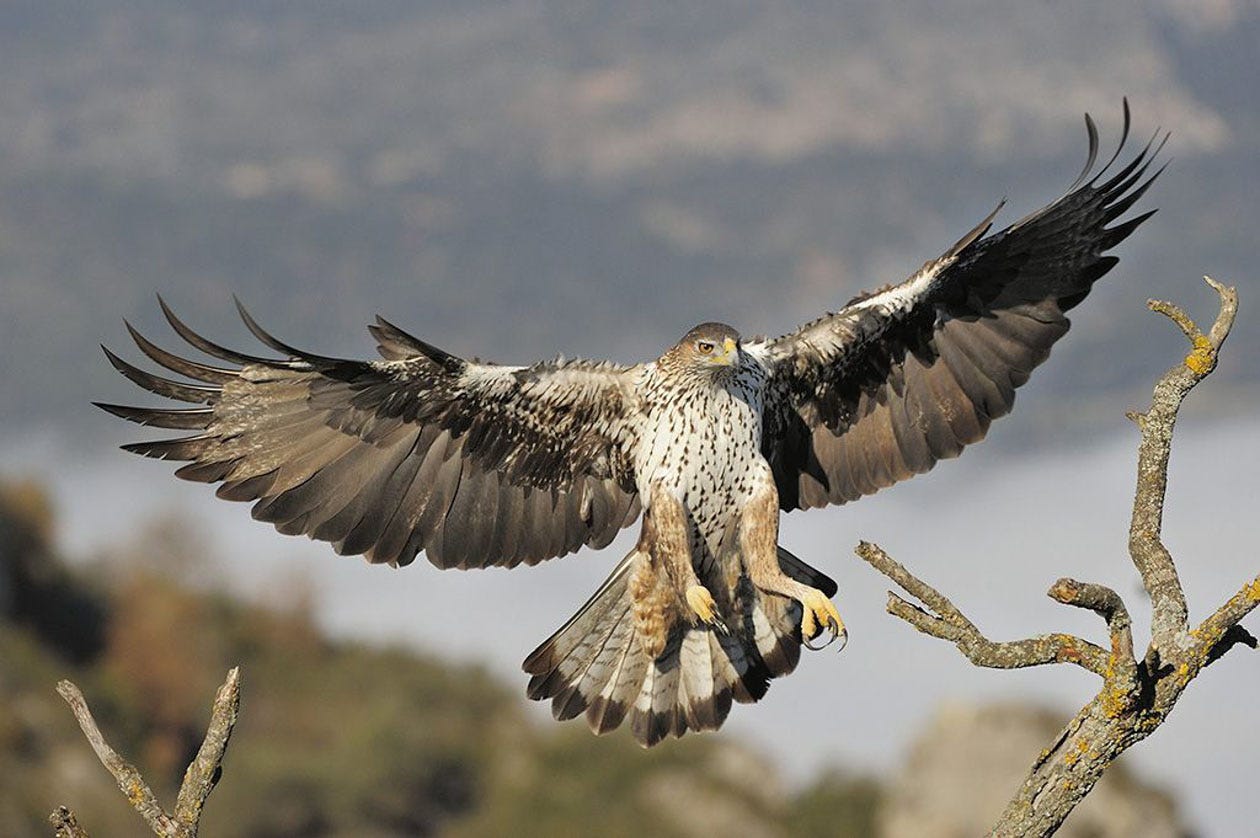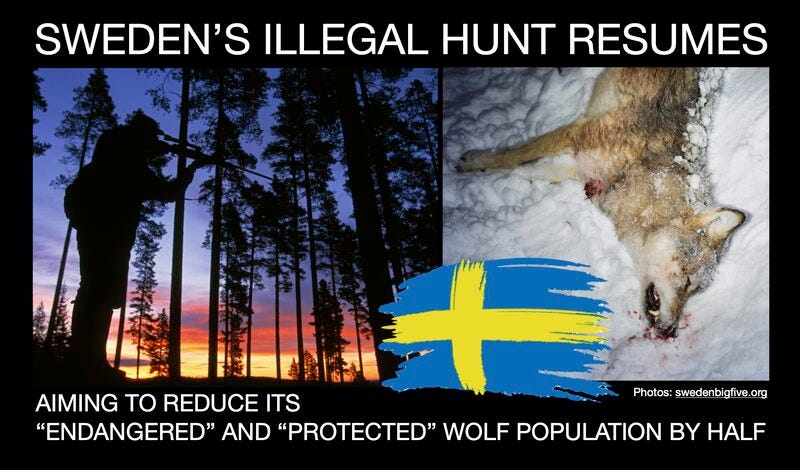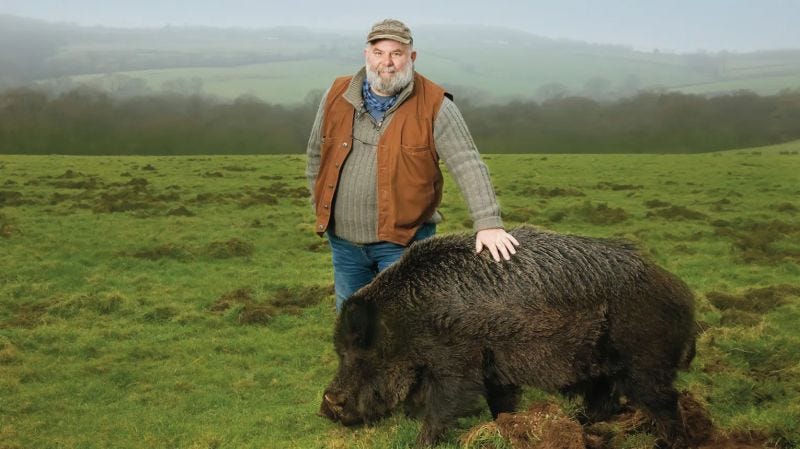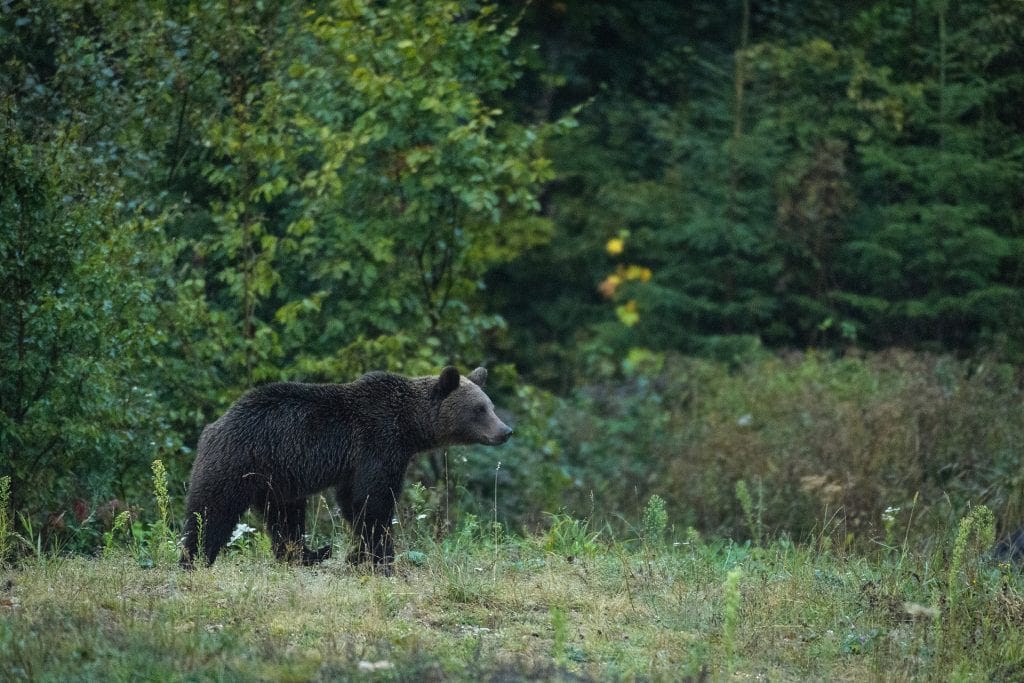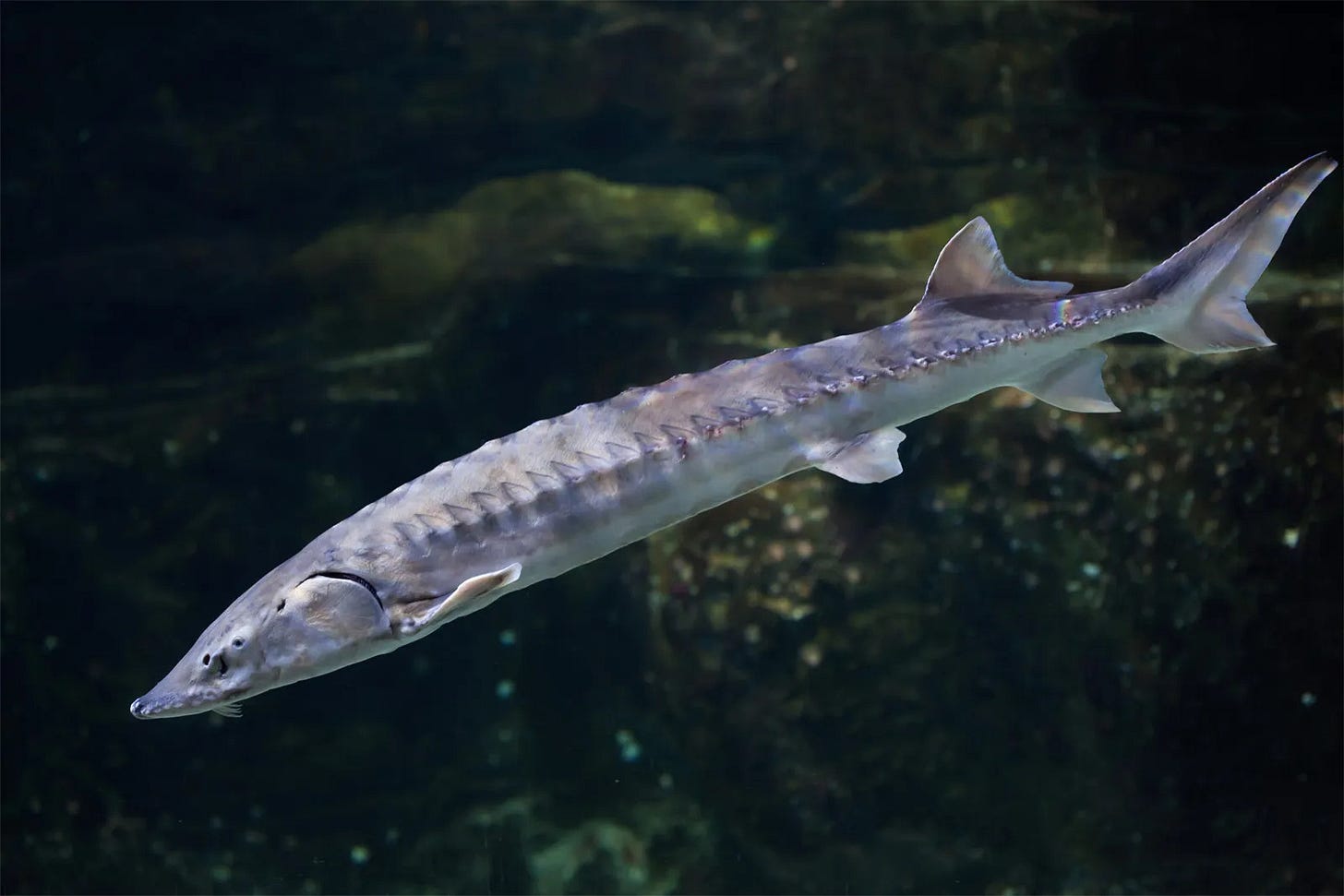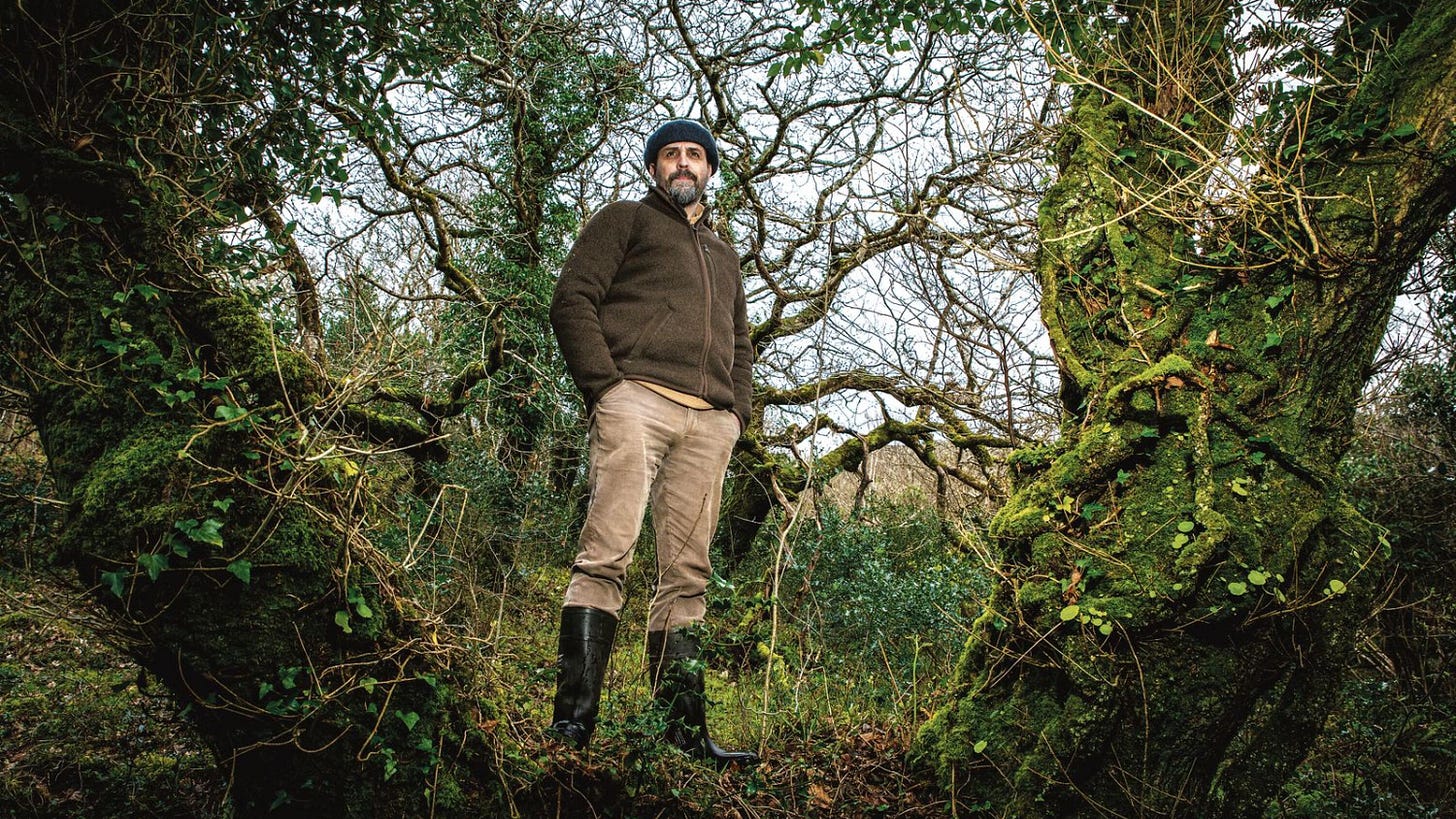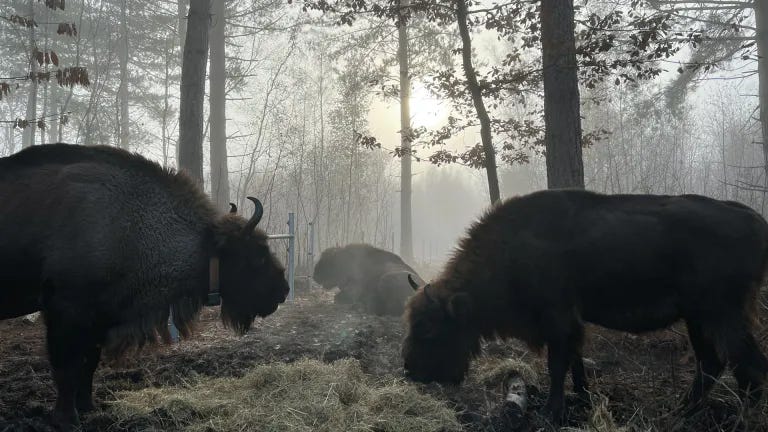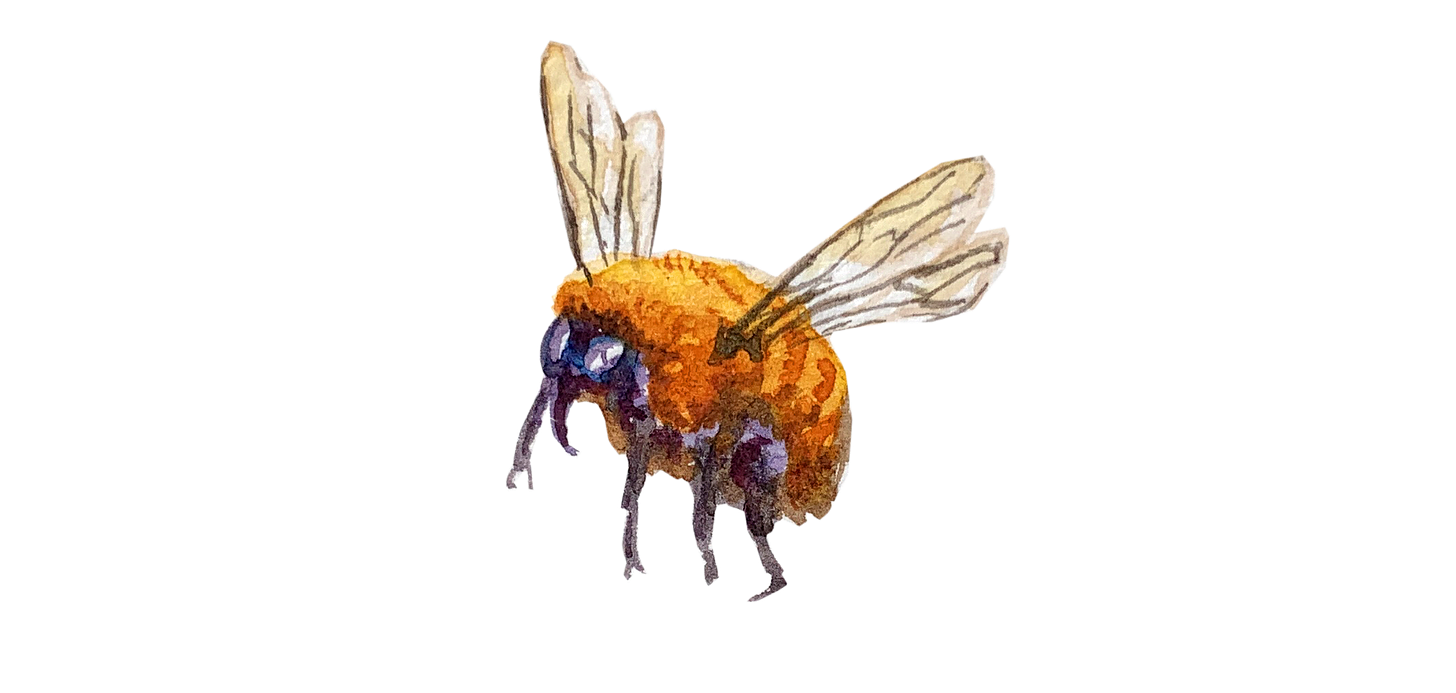Welcome to the first 2025 edition of the Rewilder Weekly. As you’ve likely noticed, we’ve moved the newsletter from LinkedIn to Substack platform. This should have zero impact on you. Let me assure you that the Rewilder Weekly will continue just as it has in the past, with all of the LinkedIn engagement you’ve come to know - so no worries! (if you’d like to know more about the move, go here.)
Now then, I hope that many of the over 4’000 subscribers on LinkedIn will join me here as well (easy to do and just as free). Thank you for your continued interest and passion for rewilding! 🙏🌳🐺🌞🌍 May 2025 see the rewilding movement scale to new heights! And now let’s get on with this week's eight selected stories.
Wishing you a good week.
Cheers,
👉 As a reminder: If you come across stories you’d like to see featured in an upcoming edition of the Rewilder Weekly, send them to me and I’ll gladly do what I can.
1) A stellar year for Rewilding Europe
There’s always lots to be upset about - like the ramped up persecution of ever more wolves across Europe - but we should never allow ourselves to go down those negative spirals. We can read, we can be outraged, we can engage, we can rally - but we cannot get caught up in the negative. That’s why the focus on the positive - the positive that comes with hope and love - is the very thing that lifts us up and keeps us going. Don’t blinder yourself to the bad stuff (like the second story), but be sure to keep a solid balance - and the Rewilder Weekly will always aim to help with that!
Now then, Rewilding Europe! Frans Schepers writes, “This has been a year where we achieved so many big wins. The diverse range of practical actions and the numerous events in our landscapes, in close cooperation with the central team, really helped to shift the baseline for wilder nature in Europe and transform the outlook for a growing number of communities and businesses. Let’s make 2025 a year we take even bolder steps to accelerate rewilding and scale up rewilding impact.” YES!
👉 Go here for Rewilding Europe’s 2024 review (great stuff!)
👉 and here to engage with Rewilding Europe’s post on LinkedIn
2) It needs repeating, it needs howling
I’ve already alerted to the resumption of Sweden’s illegal hunt in last week’s edition. But in her latest post, campaigner Lucie Wuethrich makes a powerful connection - and her words should open eyes across Sweden. Have you ever heard of the word Lagom? It essentially means “good enough” and, some say that it is very much central to Swedish culture. The use of the word comes with a sense of balance and is, when actually applied, a great way of living, of being alive on this orb in the kind of moderation that ensures there’ll be enough for every future generation.
What fearmongers, lobbies, hunters are doing in Sweden is about as far from that treasured way of being as can be. As Lucie points out, all balance has been lost with the slaughter of wolves. It truly is fearmongering hypocrisy of the highest order. Sweden is a huge country and is home to just over 10 million people. Switzerland is ten times smaller (with close to 9 million people). There obviously is a great deal of space in Sweden, space that is open for coexistence. But the few in power have decided that the less than 400 wolves in Sweden need to be decimated by half. The decision is as environmentally stupid as it is morally galling.
👉 Go here for Sweden’s Big Five article
👉 and here for Lucie Wuethrich’s post on LinkedIn
3) A day in the life of Derek Gow
Derek Gow is a well-known and fervent rewilding figure in England. He’s been rewilding his 300 acre farm for years, and has helped many others to get started and get going, too. He has become a species reintroduction expert and has had a substantial role in bringing the beaver, water vole and white stork back to England. He is engaged in reintroduction projects of wildcat and lynx, and is an outspoken supporter for the return of the wolf.
In an excellent article in Big Issue, penned by Derek Gow himself, you’ll get a glimpse into the man’s daily life - and, of course, his thoughts what what is and is not happening - and the urgency of it all. I love his thoughts farming and on rewilding corridors - and he’s absolutely right, there would only be gains from it. “Rewilding nature corridors right the way through the landscape would take the worst of the land back that’s never produced anything of great worth from a farming point of view and return it to wetlands full of frogs and dragonflies and hedges full of butterflies.”
👉 Go here for the Big Issue article
👉 and here to engage, comment, repost on LinkedIn
4) Restoration of the Fagaras Mountains
The remote Fagaras Mountains in Romania’s Southern Carpathians have been the focus of Foundation Conservation Carpathia for years now. By now they have purchased over nearly 27’000 hectares of forests and alpine meadows for restoration and full protection. While some of those forests have never been logged, a great deal of damage has been done by logging roads and monocultures. The foundation also bought nearly 2’000 hectares that had been clear-cut - and they’ve planted over 4 million trees there.
The amount of effort, and the fantastic success growing out of the foundation’s work, is staggering in equal measure. They’ve put together a 40-page look back at their 2024 - read it, you’ll understand what I mean by ‘staggering’. From forest restoration to nurseries, from wildlife to conflict management, and flourishing local businesses to outreach and scholarships - truly stellar.
👉 Read Conservation Carpathia’s excellent news update
👉 Watch what Conservation Carpathia’s wildlife camera traps captured (what riches!)
5) Big hopes for 2025’s rewilding efforts in Britain
On the first of January, Rebecca Wrigley (Chief Executive of Rewilding Britain), wrote an article in Big Issue about the hopes for 2025. “This year (2024) has shown that more and more people want to be a part of rewilding and understand the role it must play in tackling the climate and biodiversity crises. More than four in five Britons now support rewilding, and 77% believe the government should be doing more to reverse the decline of nature in Britain, according to polling we undertook with YouGov this year.”
I've been following the many engagements and projects of Rewilding Britain in 2024 - and it sure has been a good year with lots of very positive forward movement. Sussex Bay, Weald to Waves, Wilder Blean, Tir Natur, Knepp, Tor to Shore, plus the many amazing efforts in Scotland are enough to fill a book (!) and and and - lots of hugely positive news. Alas, there are also those firmly content with the conservative status quo. My hopes for Rewilding Britain's 2025 are that next big decisions and steps make be taken in 2025 - such as these: 1) full-on acceptance of the beaver everywhere; 2) reintroduction of the lynx in Scotland; prohibition of shooting estates (most importantly grouse); public access to 100% of England's national parks; the end of fox hunts (in whatever disguise they’re carried out); the end of badger persecution. Here’s hoping!
👉 Go here for the Big Issue article
👉 and here to engage, comment, repost on LinkedIn
6) Is the sturgeon coming back to the UK?
What you’re looking at here is quite a monster of a fish. The European sturgeon (also called Atlantic sturgeon), once common in British waters, could be up to six meters in length! The Guardian reports that the European sturgeon is occasionally caught in fishing nets again - and with this hopes are rising that the magnificent species is about to make a return. The sturgeon takes its time growing to maturity - up to twenty years. That makes it evident why overfishing (the fish was prized for the meat and remains prized for the caviar) led to its disappearance.
Reintroductions have taken place in various countries (here’s last year’s effort in Sweden) - and they seem to be working with populations of sturgeon beginning to grow again. Rewilding Britain explains that the sturgeon can indeed make a return to the UK, but only “if we clean up our act.” They continue, “Our rivers need rewilding if we are to successfully reintroduce this species, as we’ll have to remove the physical barriers that prevent them from migrating, or provide alternative routes around them, as well as ensure rivers are clean enough to provide them with food and shaded by trees so they are cool enough to trigger spawning. Sturgeon are also still at risk of humans through persecution, fishing and poaching. Since restoring sturgeon will benefit so many other species, many consider it worth the effort.”
👉 Go here for the Guardian article
👉 and here for the insights by Rewilding Britain
7) Restoring Ireland’s nature
Eoghan Daltun is a farmer, an activist, an author and a sculptor. Over the past fifteen years he worked to restore 30 acres of an Irish peninsula. He spent years explaining the shifting baseline syndrome and still, when most people look at Ireland (or Scotland or England or Wales or many other countries), they think themselves in the midst of what nature should look like, should be like. Daltun said, “It’s ecological illiteracy. They can’t read the landscape they’re looking at. That is a completely barren landscape. It is biologically empty.”
He turned his place into a showcase of biodiversity and climate action. He wrote a book in 2022 - An Irish Atlantic Rainforest: A Personal Journey into the Magic of Rewilding - and I’ll definitely add it to books list) and says that Ireland continues to be in a terrible state. He’s no doubt right when he says that the decline can only be reversed if farmers get behind it. The big problem is that many simply do not see the decline. “The big problem for Irish people isn’t knowing what this state of decline looks like, it’s knowing what healthy nature looks like. I say this because healthy nature is almost impossible to find in Ireland today. People aren’t able to recognise trashed ecosystems as such – because we’ve grown up thinking that what we see around us is normal.”
👉 And here to engage on LinkedIn
8) Learning from the UK's only wild bison herd
A good article that takes you into Wilder Blean, a day in the life of bison ranger Hannah Mackins, and the broader story of how the European bison made the beginning of a comeback in England, just how unexpected some of the challenges were - and what the hopes are for these majestic creatures to make big difference to the restoration of England’s degraded biodiversity.
The article highlights an important point - and it is that individual projects such as Wilder Blean are expensive and do not in themselves help the UK achieve its 30/30 goals. Chris Sandom, a senior lecturer in biology at the University of Sussex says, “If the UK is to achieve its goals, rewilding must move from individual projects to a widespread, changed approach to nature … (individual projects are) important for protecting species, but if we really want to halt decline, we have to work with nature, much more effectively.”
👉 and here to engage with Kim Somerville’s post on LinkedIn
We end the newsletter as always with an artwork by Chilean science illustrator and painter Mauricio Alvarez (mauricio_alvarez_art on Instagram): This time a playful rendering of the Chilean bumblebee. Mauricio says that this charismatic been is endangered. It lives in the temperate and cold forests of South America, in Chile and Argentine Patagonia. The illustration was made for Fondecyt Regular Research 1230020, from the Centro de Investigación en Ecosistemas de la Patagonia (Ciep) y Universidad Austral de Chile (Uach).
If you enjoy the Rewilder Weekly …
… please consider supporting my work. Your paid subscription will help generate the funds needed to realize a unique rewilding book I’m working on. And, of course, that paid subscription also ensures that the Rewilder Weekly will always keep going for those who cannot afford to pay. A thousand thanks!
That’s it for this week’s edition! For more rewilding insights and stories from around the globe, use the #rewilding hashtag and follow people, organizations and groups that are as passionate about rewilding as you are. Let’s keep connecting and growing the movement!








